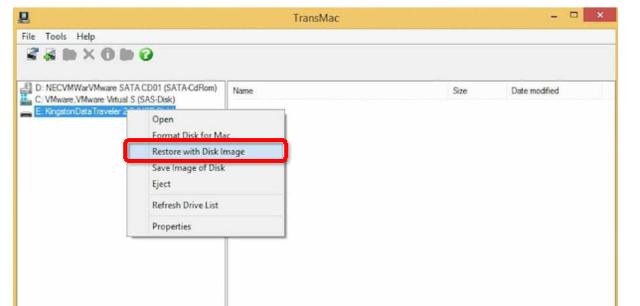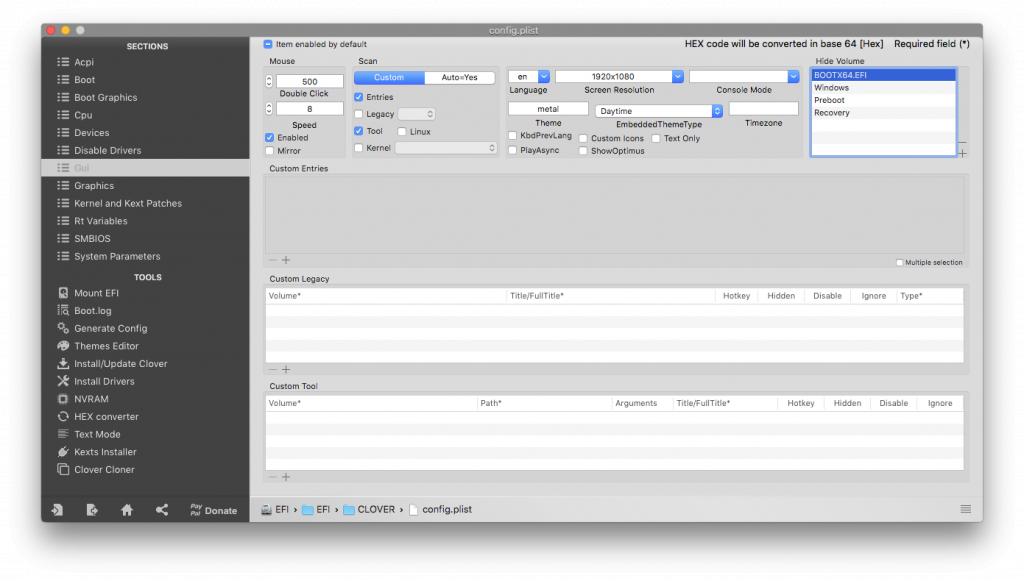

- CLOVER EFI HIGH SIERRA 10.13.6 HOW TO
- CLOVER EFI HIGH SIERRA 10.13.6 MAC OS X
- CLOVER EFI HIGH SIERRA 10.13.6 INSTALL
- CLOVER EFI HIGH SIERRA 10.13.6 ISO
Press F6 to save graphics firmware into /EFI/CLOVER/misc.Press F4 to save original (OEM) ACPI tables into /EFI/CLOVER/ACPI/origin.Press F1 for multilingual help, depending on language setting in configuration.Some Additional features and options which you can use in Clover's GUI: Navigate to Boot section, Timeout and enter a number in seconds (setting 0 will require hitting return to boot).Navigate to Boot section, DefaultVolume replace the existing one with your Drive name.Open the ist file with your favorite tool.If you've completed the post installation, set your system drive to auto-boot from Clover welcome screen. Manually selecting the System Drive and then booting isn't a good idea.
CLOVER EFI HIGH SIERRA 10.13.6 HOW TO
How to Set Clover to Automatically Boot System Drive
CLOVER EFI HIGH SIERRA 10.13.6 MAC OS X
Yes, youre right, select Apple Mac OS X and OS version then hit Next.
CLOVER EFI HIGH SIERRA 10.13.6 INSTALL
On this page, select 'I will install the operating system later' and click Next. Either on your Boot USB or the System Drive. MacOS High Sierra helps you rediscover your best photos, shop faster and more conveniently online, and work more seamlessly between devices. Before you start to edit the ist file, make sure Clover Bootloader is installed.

It's very easy to edit the ist file using specific tools such as Clover Configurator, Plist Editor, or Xcode. If needed, edit the ist by adding the required flags in the Boot section.Ĭlover's config plist is in XML which can be edited using any standard text editor, however we do not recommend to use a text editor for this purpose as sometime the file gets corrupted and you might not be able to boot. This will not permanently edit your ist.Press Escape and you'll redirected back to the Clover welcome screen.To type, simply hit enter and go to the end of line and type your desired args and hit enter. If there's any flag by default, it will show there.At Clover welcome screen, go to Options and hit enter.The ambiguity of that last statement is I did that awhile before writing this comment and I don't recall what I booted into first, only that it worked and was not hard to figure out what to do at that point.If you want to use alternate boot flags, follow the steps below: Installation will continue, or you will boot into the OS or get the Recovery Utilities menu (where macOS can be reinstalled from or Disk Utilities run). If the recovery partition isn't present and valid, these instructions won't work.Ĭlick the 2nd entry, you should see (and then click): If the 2nd partition isn't the recovery partition, look under the paths in the list to see if one of them is it. The second PCI path is probably to the recovery partition, the one you need to boot from. The first PCI path in the list is probably the boot partition that doesn't contain bootable firmware. You should see two entries in a list (they are cryptic looking PCI bus paths). Select Boot Maintenance Manager and click. You'll be brought into an EFI text-mode GUI. I was able to fix the UEFI problems as follows (credit to VirtualBox forum): After manually directing EFI to boot into macOS for the first time, macOS automatically fixed-up the boot partition, and subsequent boots worked properly.
CLOVER EFI HIGH SIERRA 10.13.6 ISO
In my case, after installing macOS into a Virtual Machine according to these instructions (running macOS installer from an ISO downloaded from Apple), on first boot, the boot partition was present but unconfigured (probably no boot image installed). By now you may have surmised boot.efi is an EFI standard filename that lives at an EFI standard path in a disk partition, and it contains os-specific boot firmware (e.g. Ultimately, the objective is provide a boot partition that contains macOS boot.efi. Your immediate objective is to help EFI locate and execute os-specific boot firmware. However, assuming you have a macOS recovery partition on that disk, it should contain a copy of boot.efi (macOS-specific boot firmware) that you can boot into the OS with. UEFI requires intervention because EFI firmware on the Mac's motherboard cant find valid OS-specific EFI boot firmware in the standard location on disk.


 0 kommentar(er)
0 kommentar(er)
